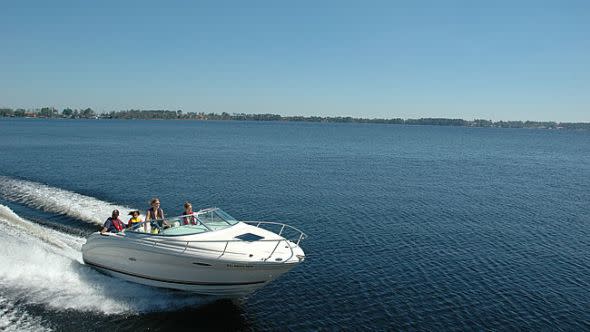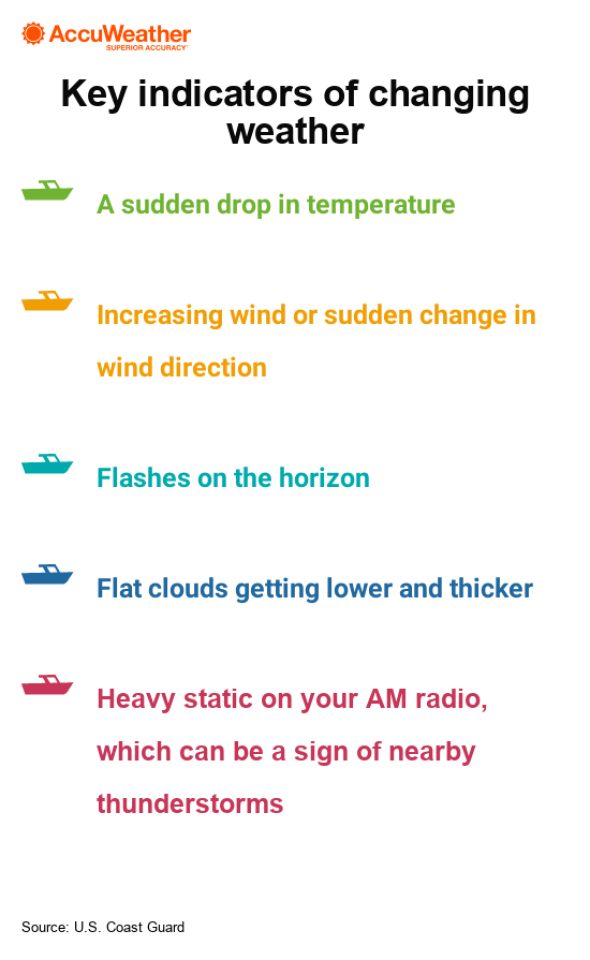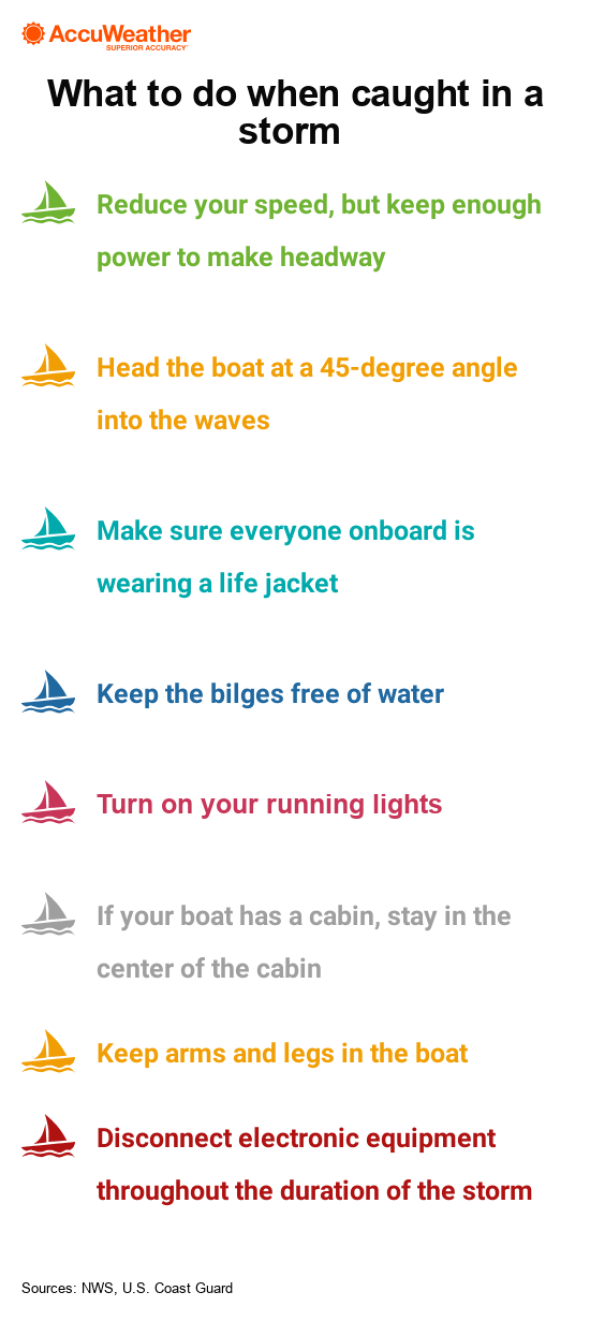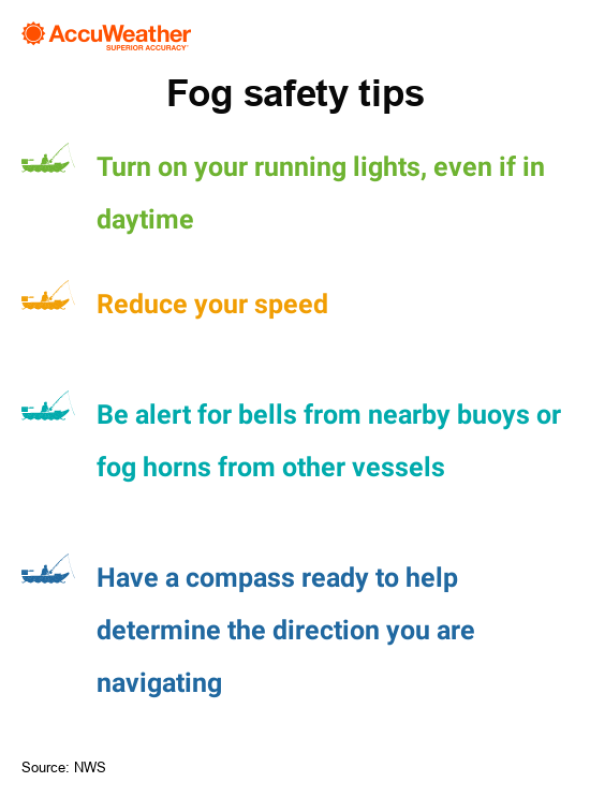Boating safety: Staying weather aware, having an action plan is crucial
Boating is one of the most popular recreational activities during the summertime in the United States. Whether you're on a tour boat or piloting your own vessel on a lake, river or in the ocean, staying cognizant of the weather is a key component of having a safe, enjoyable time on the water.
Monitoring the forecast, as well as the marine weather forecast, is crucial to boating safely because the weather can often change quickly, leaving boaters in a precarious position if unprepared.
On July 19, a tragedy unfolded in Branson, Missouri, when a duck boat capsized on Table Rock Lake during a severe thunderstorm, which produced winds over 60 mph. Seventeen of the 31 people on board the boat drowned.
According to a report by the U.S. Coast Guard, there were 4,291 accidents that involved 658 deaths, 2,629 injuries and approximately $46 million of damage to property as a result of recreational boating accidents in 2017.
Of the 10 known contributing factors of accidents, weather was ranked eighth. Nearly 200 accidents, 40 deaths and 60 injuries were blamed on weather.
The National Safe Boating Council (NSBC) is one of the leading organizations for promoting a safer recreational boating experience. In 2015, Rachel Johnson, then the NSBC Executive Director, told AccuWeather working together with other boating safety agencies, including the Coast Guard, to promote safe boating campaigns has been a significant factor in raising awareness.
"I think it's really getting out to boaters and making them more aware of how to boat more safely each and every year," Johnson said.
Each year, the NSBC organizes National Safe Boating Week to help promote smart and responsible boating practices around the country. The next National Safe Boating Week is slated for May 18-24, 2019.
Here are several ways to stay alert and prepared for inclement weather.
Take a boating safety course
When learning how to properly operate a boat, a key aspect is getting a firm grip on understanding how to read the weather. The number-three cause of boating incidents in 2017, according to the Coast Guard, was operator inexperience.
The NSBC trains professionals who then, using the curriculum installed by the organization, instruct recreational boaters throughout the country.
While weather preparation isn't a primary focus, it still plays a key role in the NSBC's training efforts, according to Johnson.
Johnson gave the example of learning how to dock a boat and perform a close-quarters maneuver near the shore, which can be very tricky if the wind is blowing.
"Weather is a very important part of boating, and it's a very important part of safe boating," Johnson said. "We always encourage boaters to make sure they are always keeping an eye on the weather because it can change quickly, it can change drastically and it can really affect your day."
More information on boating safety classes can be found here.
Ensure that you have the proper equipment, information
In advance of a boating trip, be sure to check the forecast. Also, stay connected while on your trip by using mobile devices and weather radios.
Download the free AccuWeather app to stay informed about any weather hazards and warnings and to obtain the most accurate forecasts.
The U.S. Coast Guard requires that all recreational vehicles must carry one Coast Guard-approved life jacket per person on board. The most important safety measure the NSBC recommends to boaters, regardless of weather, is to wear a life jacket. None of the victims of the Branson incident were reportedly wearing life jackets.
Having the proper communication equipment is important too. A VH-FM radio is key, especially since cell phones can become unreliable if you head further off shore. If heading out more than 25 nautical miles from shore, satellite phones are recommended.
The Coast Guard offers a mobile app for boating safety. The app comes with a detailed checklist of the latest safety regulations, the ability to find the nearest National Oceanic and Atmospheric Administration (NOAA) buoy, as well as a way to request emergency assistance.
It also lets you send a float plan to friends and family faster than ever before. From kayakers to deep-sea fishermen, filing a float plan with the Coast Guard is recommended for anyone heading out on the water. A float plan consists of detailed information about where you departed from, the time and place you're expected to return and any other pertinent details about your trip.
Coast Guard-approved, marine-style fire extinguishers and visual distress signals (flares) must also be kept on board.

(Photo/U.S. Coast Guard)
How to manage and prepare for adverse weather while on the water
From rapidly changing winds and waterspouts to severe thunderstorms and fog, there are plenty of weather threats to boaters.
Thunderstorms are one of the more common dangers to mariners because they can develop quickly.
According to both the Coast Guard and National Weather Service (NWS), boaters should never venture out if thunderstorms are a possibility. If out in the water and you notice approaching storms, return to land or shelter as soon as possible.
If unable to return to land, it's best to "stay inside the cabin and avoid touching metal or electrical devices." If your boat doesn't have a cabin, stay as low as possible in the boat, the NWS states.
Fog is another danger that can disorient a boater and disrupt their navigation and like thunderstorms it can form quickly. According to the NWS, fog is typically considered dense when it reduces visibility to below a mile.
When on a vessel, the Coast Guard suggests to keep a close eye out for these signs that may indicate a change in weather:



For more safety and preparedness tips, visit AccuWeather.com/Ready.

